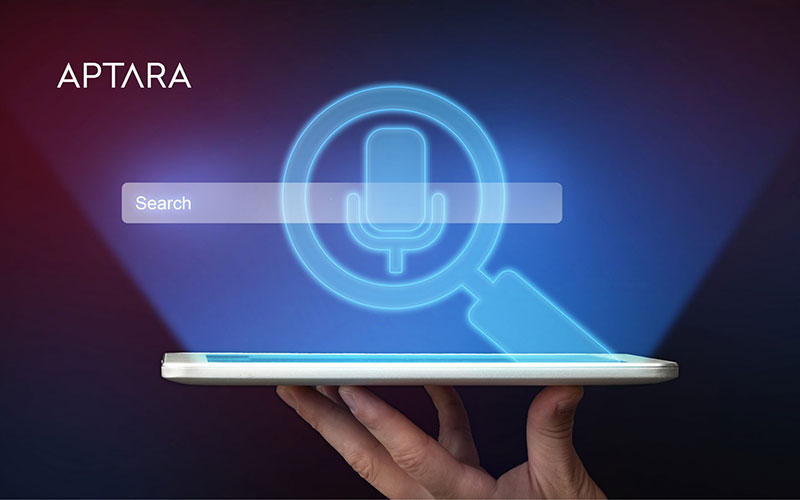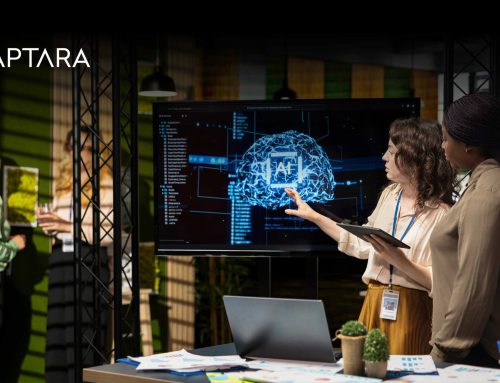It’s possible that you may be in, or may be affected in some way by the corporate or academic training worlds. Whether you’re an Instructional Designer (ID), an employer of an ID, or a participant in training, the topic of Artificial Intelligence (AI) and accessibility has most likely come up in training conversations. In today’s corporate and academic training worlds, AI and accessibility are transforming learning experiences. Understanding the pros and cons of these technologies is essential for effective implementation. Let’s discuss it!
Why is it Vital to Consider Training Composed with AI and Accessibility?
Designing learning platforms incorporating both AI and accessibility brings a unique set of advantages. Consider the impact for a moment. There are always huge advantages to creating a comprehensive and inclusive educational experience no matter the training platform. However, the landscape of education has undergone a significant transformation with the advent of technology, especially with the integration of AI and accessibility features in the learning and training world. These advancements promise a more personalized, efficient, and inclusive learning experience. Still, as with any technological innovation, there are both advantages and challenges to consider. Interested? Continue on to learn if AI, accessibility, and training have perfect harmony…or not.
Introducing Sam
First, to set the stage, walk through the following scenario to consider what the forces of AI and accessibility within the training look like. Later, we’ll examine any considerations and arguments.
Sam is about to embark on a training journey. The world of point of sale (POS) training that’s enhanced with AI and built with accessibility in mind.
Imagine a day in the life of Sam, a new retail employee, as they navigate this high-tech training experience.
AI-Powered Onboarding
Sam logs into the POS training platform for the first time, feeling a mix of excitement and nervousness. The platform, powered by AI, immediately makes a good impression.
“Welcome, Sam! Ready to become a POS pro?”
The dashboard displays a personalized training path based on Sam’s previous experience and learning style. The AI has already analyzed her onboarding survey and tailored the training modules to fit their needs.
Adaptive Learning Modules
The training modules are broken down into manageable chunks, starting with the basics of operating the POS system. Sam appreciates that the AI keeps track of their progress and adjusts the difficulty level accordingly.
For example, after a few introductory lessons, the AI notices that Sam is quickly grasping the concepts and suggests skipping ahead to more advanced features, like handling returns and exchanges.
Interactive and Engaging Content
The platform isn’t just about reading instructions and watching videos. It includes interactive simulations that let Sam practice using the POS system in a virtual environment. This hands-on experience is invaluable.
Today, Sam is learning about processing sales and the AI has set up a virtual store scenario. Sam gets to practice scanning items, applying discounts, and completing transactions just like in real life. The simulation is realistic, and mistakes are met with gentle corrections and helpful tips.
Accessibility Features: Inclusive Training for All
Sam has a hearing impairment, but that’s no problem with this training platform. All videos come with captions and sign language interpretation. There’s also an option for text-to-speech, which Sam’s colleague, Cho, who has dyslexia, finds incredibly helpful.
The interactive simulations are designed with accessibility in mind, too. They work seamlessly with screen readers and can be navigated using keyboard shortcuts, making sure everyone can participate fully.
Real-time Support and Feedback
Whenever Sam gets stuck, there’s an AI-powered virtual assistant ready to help (in an ideal training experience). This assistant provides real-time support, answering questions, and offering explanations right when they’re needed.
“Hey, how do I apply a discount to an item?”
The virtual assistant walks Sam through the steps, providing clear, concise instructions. It’s like having a personal trainer who’s always available, ensuring Sam never feels lost or overwhelmed.
Inclusivity and Team Learning
One of the best parts about this AI and accessibility-enhanced training is how it fosters a sense of inclusivity. Sam’s colleague, Aarav, who uses a wheelchair, finds the platform’s design accommodates all physical needs, ensuring they can complete all training modules without any barriers.
Their team often discusses their training experiences, sharing tips and tricks they’ve learned from the AI insights. This collaborative learning environment boosts everyone’s confidence and competence with the POS system.
End of the Day: Reflecting on Progress
At the end of the day, Sam checks the training dashboard. The AI provides a detailed summary of what’s been learned and highlights areas that might need more practice.
“Great job today, Sam! You’ve mastered basic transactions and returns. Next up: inventory management.”
The feedback is personalized and motivational, making Sam feel accomplished and ready for the next challenge.
The Benefits of Accessibility
Here’s the pitch for Sam’s AI and accessibility training experience:
Using a POS training platform enhanced with AI and accessibility features is a game-changer. For Sam, it means a personalized, engaging, and inclusive learning experience. The AI adapts to individual needs, and the accessibility features ensure that everyone can participate fully, regardless of their abilities.
So, whether you’re a new employee getting up to speed or a seasoned professional brushing up on skills, AI and accessibility together create a powerful, supportive training environment. It’s not just about learning to use the POS system; it’s about feeling confident and included every step of the way. And that makes all the difference in the world.
Let’s break this down a bit more. Sam’s scenario includes the following pros:
Sam experienced “Personalized Learning for All” with an adaptive learning feature. AI can customize learning paths based on individual student needs, while accessibility ensures that these personalized experiences are available to everyone, regardless of their abilities.
Sam encountered “Increased Engagement and Motivation” due to the interactive and inclusive content. AI can generate interactive and engaging content, such as simulations and gamified activities, which are made accessible through features like captions, screen reader compatibility, and alternative text descriptions, ensuring all students can participate fully.
Sam was on the receiving end of “Enhanced Support and Assistance” thanks to the 24/7 Virtual Tutors. AI-powered virtual tutors can provide round-the-clock assistance, offering explanations, answering questions, and guiding students through the material. Accessibility features ensure these tools are usable by students with neuro-diversity, such as those needing text-to-speech or speech-to-text functionalities.
Throughout and at the conclusion of the training, Sam was presented with a “Comprehensive Feedback and Assessment” via the automated and accessible grading feature. AI can automatically grade assignments and provide feedback, with accessibility features ensuring that feedback is understandable and usable by all students, including those with visual or hearing impairments.
Because of this type of training, Sam’s training experience was “Efficient and Scalable”. A scalable solution through AI allows learning platforms to efficiently handle a large number of students, providing personalized experiences at scale. Accessibility ensures that these scalable solutions are inclusive, catering to a diverse student body.
Sam’s training journey provided “Data-Driven Insights”. With inclusive analytics, AI analyzes vast amounts of data to identify trends and insights into student performance. When designed with accessibility in mind, these analytics tools can ensure that the data reflects the experiences of all learners, including the neuro-diverse, providing a more accurate picture of educational outcomes.
Sam’s training provided the possibility of “Enhanced Collaboration” through inclusive collaborative tools. AI can facilitate collaborative learning experiences through intelligent grouping and project management tools. Accessibility features ensure that all students, including the neuro-diverse, can participate and contribute equally to group work.
Sam was fortunate to participate in a training that met the standards for “Legal and Ethical Compliances”. Combining AI with accessibility helps learning platforms comply with legal standards such as the Americans with Disabilities Act (ADA) and the Web Content Accessibility Guidelines (WCAG). This not only avoids legal issues but also promotes ethical responsibility and social inclusion.
If you could ask Sam if they experienced an “Improved Learning Outcome”, they may respond with an answer flavored with a bit of holistic development lingo. That’s because the integration of AI and accessibility can ensure that learning experiences cater to the whole student population, leading to better educational outcomes across diverse groups. This holistic approach fosters a more equitable educational environment.
Sam’s training is also “Future-Proofing Education” by its dual innovative and inclusive strategy. When incorporating both AI and accessibility, learning platforms are better prepared for future advancements in technology and educational practices. This forward-thinking approach ensures that the platforms remain relevant and beneficial for all learners.
We’ve come to the end of Sam’s training experience. It may be presumptuous to state that many IDs and those whose organizations are impacted by a learner’s job or academic performance, would give a great big cheer for Sam’s type of training. It’s easy to imagine the enthusiasm such training would generate among learners.
If you think about it, the above scenario played out like a huge success. Why? The integration of AI and accessibility in learning design can create a synergistic effect, enhancing the learning experience for all learners. One could say that when learning events are not only personalized and engaging but also inclusive and equitable, the training formula paves the way for a more just and effective educational landscape.
Do you agree, disagree, or agree to disagree?
Well, wait! We’re not done yet. There’s a bit more to be mindful of, here.
Let’s employ a little critical thinking. We must consider why one would protest the weaving of AI and accessibility into training solutions. Below are a few “known” circumstances that counterbalance the heady possibilities of such a scenario.
Challenges to Consider
Privacy and Security Concerns
Would Sam feel comfortable with the privacy of his data while AI is at the helm? AI systems require vast amounts of data to function effectively, raising concerns about the privacy and security of learners’ personal information.
Bias in Algorithms
Danger! Warning! AI algorithms can inadvertently perpetuate biases present in the training data, leading to unfair or inaccurate outcomes. All of us need to guard against any possibility of biases creeping in. Unconscious, or not.
Dependence on Technology
When it comes to technical issues, a reliance on AI systems can lead to problems if there are technical issues or system failures, potentially disrupting the learning process.
Reduced Human Interaction
Over-reliance on AI may reduce the opportunities for meaningful human interactions between students and educators, which are crucial for a holistic learning experience.
Increased Costs and Resources
Consider the development costs of implementing accessibility features. Depending on the degree of accessibility features used, those involved in the training budget must be aware that it can be costly and time-consuming, requiring specialized knowledge and resources.
Ongoing Maintenance
Be cognizant of the scope of maintaining and updating accessible learning content to ensure it meets evolving standards can be resource-intensive.
Complexity in Design
Design challenges come into play when creating accessible learning content. In an ID’s world, design challenges almost ALWAYS make an appearance. But when adding AI and accessibility into a training composition be mindful that it requires even more careful planning and design, which can be challenging for IDs or organizations without prior experience in accessibility.
Let’s Wrap It Up
While AI and accessibility bring immense potential to training, organizations need to weigh the benefits against the challenges. Staying informed and adaptable ensures that training remains inclusive, effective, and ethical in the evolving digital landscape.
Designing learning platforms with AI and accessibility in mind offers numerous benefits, including personalized learning experiences, enhanced engagement, and inclusivity. However, it also presents challenges such as privacy concerns, increased costs, and the need for ongoing maintenance. Balancing these pros and cons is essential for creating effective and equitable learning environments.
As technology continues to evolve, it’s crucial for educators and organizations to stay informed and adaptive, ensuring that learning through training remains a powerful (harmonious) tool for all learners, most especially for the Sam’s, Cho’s, and Aarav’s in our world.





